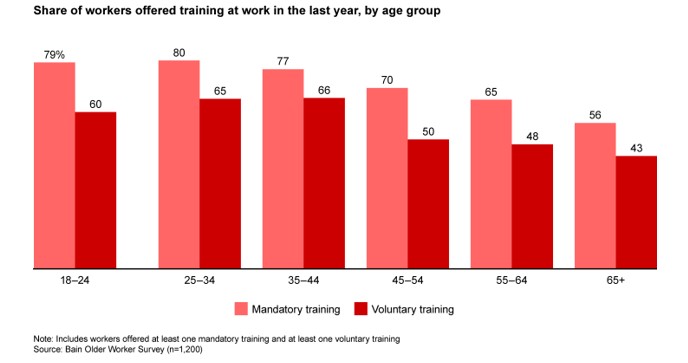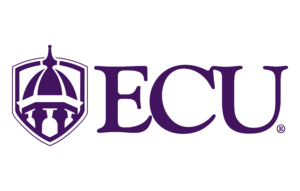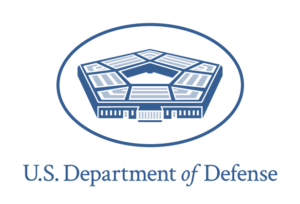Written by: Abby Keeler, BS and Kayla Reed-Fitzke, PhD, LMFT
In our last blog, we discussed the importance of remaining adaptable in a constantly evolving workforce. Changing long-standing workplace habits can be a significant challenge for midlife professionals who have been in their careers for years. Integrating AI at work presents a large challenge, but as we discussed in the last blog, we can start small and work together. In this blog, we will explore various ways to empower midlife workers who support military spouses.
The good news is, you’re not alone! According to the Bureau of Labor Statistics (2022), although the workforce is changing in a number of ways, the number of midlife and older individuals participating in the workforce remains sizable and is predicted to continue to increase by 2031. It is important to embrace and empower midlife workers by responding to their developmentally unique needs.
Steps to Empower Workers (Root et al., 2023)
- Retain and Recruit: What are the things that motivate midlife workers in their work? Identify the factors that are meaning-making to help recruit and retain talent. There is an increasing desire for autonomy and flexibility at work, providing those elements to midlife workers may also help retain and recruit stellar employees.
- Reskilling: Focus on what skills are going to be needed within the next decade. Midlife workers should focus on seeking out companies who will prioritize opportunities for reskilling and upskilling—like incorporating AI, teaching new efficiency tactics, etc.
- Respect their Strengths: Midlife workers have previous valuable work experiences that can enhance any work environment, and those skills need to be showcased.

Table Attribution: (Root et al., 2023) Bain Older Worker Survey
The graph above demonstrates that as the workforce ages, fewer and fewer training opportunities are offered to workers. Organizations and employers cannot forget midlife workers on their quest for growth. Midlife workers can actually aid in training programs through mentorship. It can be helpful if midlife workers are given the opportunity to train younger employees, which, in turn, would help them learn new skills themselves – a win-win for everyone involved.
Here is a step-by-step approach to help midlife workers and military spouses assess skill gaps and take action:
Step 1: Self-Assessment
- Reflect on current skills: List the skills you use in your current role and previous jobs.
- Use online skill assessment tools: Platforms like LinkedIn Learning, Coursera, or SkillsMatch can help pinpoint areas for growth.
Step 2: Gather Feedback from Colleagues and Supervisors
- Ask for performance reviews: Request feedback on strengths and weaknesses.
- Seek peer insights: Colleagues can highlight skills you overlook or suggest areas to improve.
Step 3: Research Industry Trends and Future Skill Demands (Kimbrough, 2024)
- Follow industry leaders and reports: Resources like the Bureau of Labor Statistics, LinkedIn’s Workforce Report and industry newsletters help track evolving skill needs.
Step 4: Set SMART Goals for Reskilling (Doran, 1981)
- Specific: Identify one or two key skills to develop.
- Measurable: Determine how progress will be tracked.
- Achievable: Choose learning opportunities that fit within your schedule and budget.
- Relevant: Focus on skills that align with your career aspirations.
- Time: Set a deadline to acquire or improve your skill(s) of choice.
Step 5: Leverage Learning Resources and Professional Development
- Enroll in online course: Use platforms like LinkedIn Learning or leverage the My Career Advancement Account Scholarship (MyCAA) to obtain specialized certifications via MedCerts.
- Attend workshops and webinars: Look for employer-sponsored training or industry conferences.
Step 6: Apply and Showcase New Skills
- Update your resume and LinkedIn profile: Update new skills and certifications.
- Seek opportunities at work: Volunteer for projects that allow you to practice new skills.
- Network: Share knowledge. A great way to learn a new skill is by explaining or teaching it to someone else!
Moving Forward Together
Midlife workers and military spouses can adjust to an evolving workforce. Catherine Fisher, a LinkedIn Career Expert said, “By embracing continuous learning and growing a solid support system, you’ll be well-equipped to face – and overcome – whatever challenges lie ahead” (Borden, 2024). As organizations and employers discover the challenges military spouses and midlife workers are facing, they must seek out ways to help empower them and highlight their unique talent pool. We hope this blog has given you some ideas on how to propel yourself and/or others forward on to the next step in an impactful career.
References:
Borden, T. (2024, October 30). The most pressing challenges professionals are facing at work—and how to overcome them [LinkedIn post]. LinkedIn. https://www.linkedin.com/pulse/most-pressing-challenges-professionals-facing-work-how-taylor-borden
Bureau of Labor Statistics. (2022). Projections overview and highlights, 2021–31. U.S. Department of Labor. https://www.bls.gov/opub/mlr/2022/article/projections-overview-and-highlights-2021-31.htm
Doran, G. T. (1981). There’s a SMART way to write management’s goals and objectives. Journal of Management Review, 70(11), 35–36. https://community.mis.temple.edu/mis0855002fall2015/files/2015/10/S.M.A.R.T-Way-Management-Review.pdf
Kimbrough, D. (2024, October 29). Business leaders and professionals agree: Work is changing—Here’s how. LinkedIn. https://www.linkedin.com/pulse/business-leaders-professionals-agree-work-changing-heres-kimbrough-x2utc/
Root, J., Schwedel, A., Haslett, M., & Bitler, N. (2023, July). Better with age: The rising importance of older workers. Bain & Company. https://www.bain.com/insights/better-with-age-the-rising-importance-of-older-workers/
Cover Image by: PX Media | Adobe Stock 129612344













